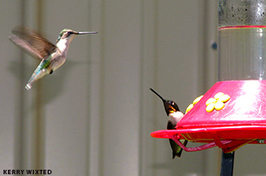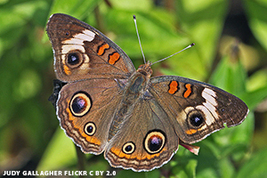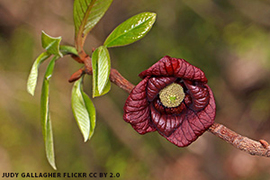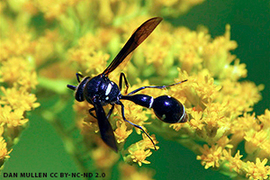|
|
|
|
|
I love fall. As the days grow shorter and the temperature starts to dip, wildlife activity in the garden often intensifies. Animals that stay during the winter are busy caching food and fattening up, while others are fueling up to travel long distances to warmer climates.
In this issue of HabiChat, we’ll focus on a native fruit tree known as the paw-paw, a favorite fruit of George Washington and an excellent food source for many mammals. In addition, you can learn about potter wasps and their unique nest structures that can be found around local gardens, as well as ways to bewitch local butterflies and moths (Lepidoptera) to overwinter in your yard. Finally, we have a quick list of common questions that often pop up in the fall.
Happy Habitats!
Kerry Wixted
|
|
 Common Questions for Fall Backyards
When is the best time of year to remove your hummingbird feeders?
Can you sow wildflower seeds in the fall?
What are the best types of seeds to feed birds?
The answers to these questions and more are available here!
|
 Bewitching Butterflies and Moths
As the weather begins to cool, many species begin to prepare for fall and winter.
What happens to butterflies and moths, and how can we help them with our gardens?
|
|
|
 Paw-Paw (Asimina triloba)
What in the world is a paw-paw? Paw-paws are America’s forgotten fruit. These trees
with mango-like fruits can be found throughout moist woods and along
streams in Maryland. There are even a few local farms that grow
paw-paws!
|
|
 Potter Wasps (Eumenes fraternus)
Oftentimes, the word wasp incites fear and anxiety. However, many are relatively small and docile in nature. One neat group is potter wasps; they serve as both pollinators and predators in the garden.
|
|
|
|
Where, oh where is dear little Nellie?
Way down yonder in the pawpaw patch
Pickin' up pawpaws, puttin' 'em in your pocket
-American folk song
|
|
|
For more fall tips and tricks, check out the HabiChat archives.
Wild Acres is a voluntary program that encourages residents to create backyard wildlife habitat. In addition to this seasonal newsletter, it offers fact sheets on how landowners can enhance their habitat for wildlife.
|
|
|
|
|
|